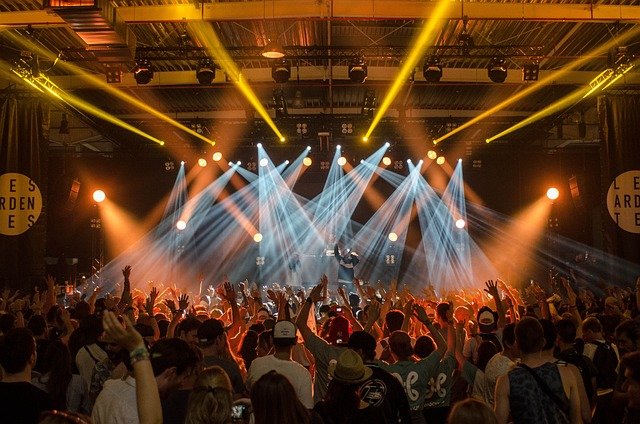Measuring Engagement for Cultural and Performance Events
Effective measurement of engagement helps cultural organizers, curators, and venues understand how audiences interact with exhibitions and performances. This overview outlines practical metrics, tools, and approaches for in-person and streamed events, helping teams refine curation, promotion, and monetization strategies while respecting artistic goals.

Measuring engagement for cultural and performance events requires a mix of qualitative observation and quantitative tracking to capture how audiences experience exhibitions, performances, and festivals. Reliable measurement goes beyond attendance counts: it looks at time spent, interaction patterns, social activity, and follow-up behavior. Different formats—gallery exhibitions, live theater, immersive installations, and streaming presentations—demand tailored approaches. Data should inform artistic decisions like curation and programming while also supporting practical needs such as promotion, licensing, and monetization strategies.
How to measure engagement at exhibitions
For exhibitions, engagement often means time-on-site, repeat visits, and interaction with interpretive materials. Visitor flow studies and simple observational counts reveal where people pause or bypass displays. Digital tools—QR codes, mobile check-ins, and interactive kiosks—can log dwell time and which labels or multimedia assets are accessed. Surveys and comments gathered on-site or via follow-up emails add qualitative insight about comprehension and emotional response. Combining observational and digital signals produces a fuller picture of how an exhibition resonates with its intended audience.
How to assess engagement during performances
Performances generate distinct signals: applause, silence, social sharing, and post-show discussions all reflect engagement in different ways. For live events, ticket scanning with time stamps, audience surveys, and backstage interviews can illuminate satisfaction and perceived value. For touring productions and festivals, tracking repeat attendance and subscription retention highlights sustained interest. For both live and recorded formats, sentiment analysis on social posts and review platforms can supplement direct feedback to indicate which elements of a performance—acting, staging, or pacing—drove audience response.
How curation, collaboration, and promotion affect audience engagement
Curation choices and collaborative projects shape the narratives that attract and hold audiences. Engagement metrics should therefore include measures of promotional reach—email open rates, ad click-throughs, and referral traffic—and the conversion of those contacts into attended events. Collaboration with community organizations or other cultural institutions often broadens audience demographics; tracking new versus returning visitors and partnership-driven referrals helps evaluate those relationships. Promotional analytics combined with onsite behavior reveal whether marketing messages align with the actual visitor experience.
How streaming, immersive visuals, and sound influence analytics
Streaming and immersive presentations create digital-first engagement patterns. Analytics for streaming include view counts, average watch time, completion rates, and engagement events such as chat participation or virtual Q&A attendance. In immersive physical installations, sensor data for movement and gaze, as well as audio level interactions, provide insight into how visuals and soundscape influence attention. Integrating technical logs from streaming platforms with onsite sensor data enables cross-channel comparisons that clarify whether immersive elements encourage longer engagement or more active participation.
How monetization, licensing, and festivals use engagement data
Monetization and licensing decisions depend on measurable audience interest. For ticketed performances and festivals, metrics like ticket revenue per attendee, merchandise sales, and subscription sign-ups indicate direct financial engagement. Licensing interest can be assessed through inquiries, demo views, and downloads of promotional materials. Festival organizers may track cross-event attendance and sponsorship response rates to demonstrate value to funders and partners. These indicators should be contextualized with audience demographics and feedback to ensure financial strategies reflect cultural and artistic goals.
How analytics can refine future events
Analytics are most useful when they feed back into planning cycles. Establishing baseline measures—attendance patterns, average engagement time, and social reach—allows teams to test changes such as new curation approaches, altered scheduling, or varied pricing. Use A/B testing for promotional messages and monitor analytics dashboards to spot trends. Local services such as audience research firms or ticketing platforms in your area can help implement tracking and interpret results. Combining quantitative data with artist and curator reflections ensures adjustments respect the creative intent behind exhibitions and performances.
Conclusion
A balanced measurement strategy for cultural and performance events blends observational methods, digital analytics, and qualitative feedback to capture the many dimensions of audience engagement. By tracking metrics tailored to exhibitions, performances, streaming, and festivals—and by applying those insights to curation, promotion, and monetization—organizers can make informed choices that support artistic goals and sustainable operation. Ongoing review ensures measurement evolves alongside formats, technologies, and audience expectations.





